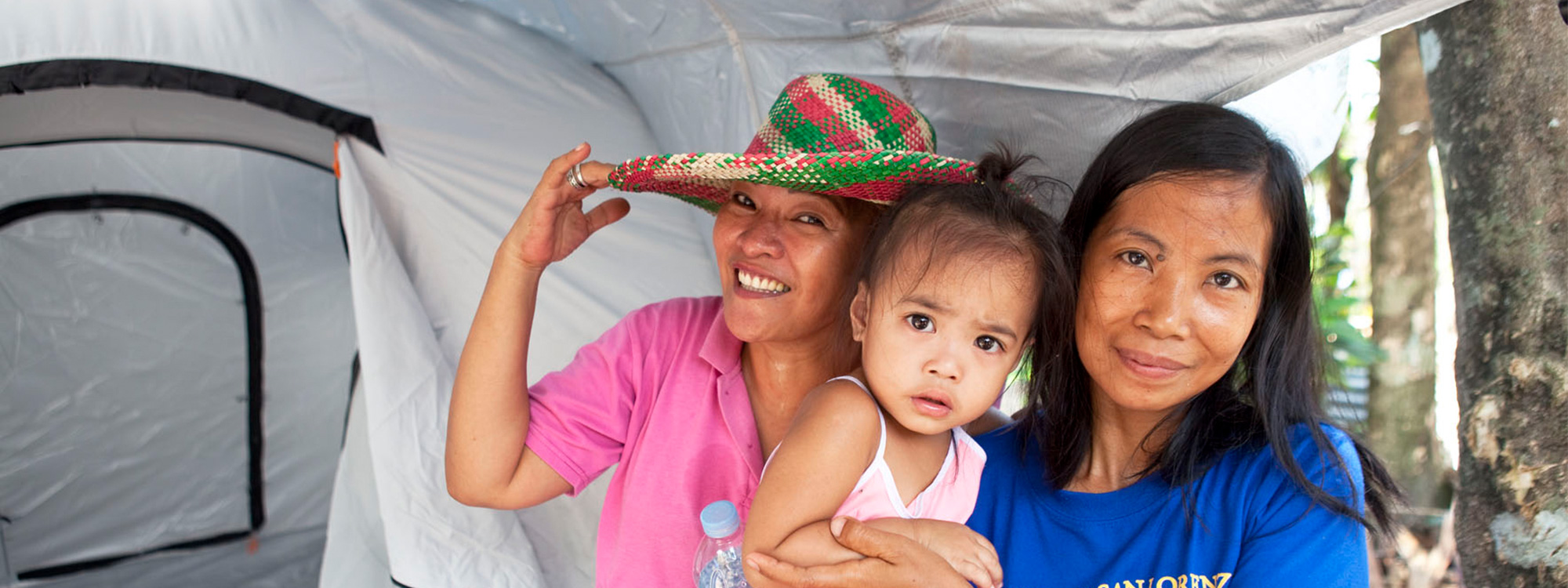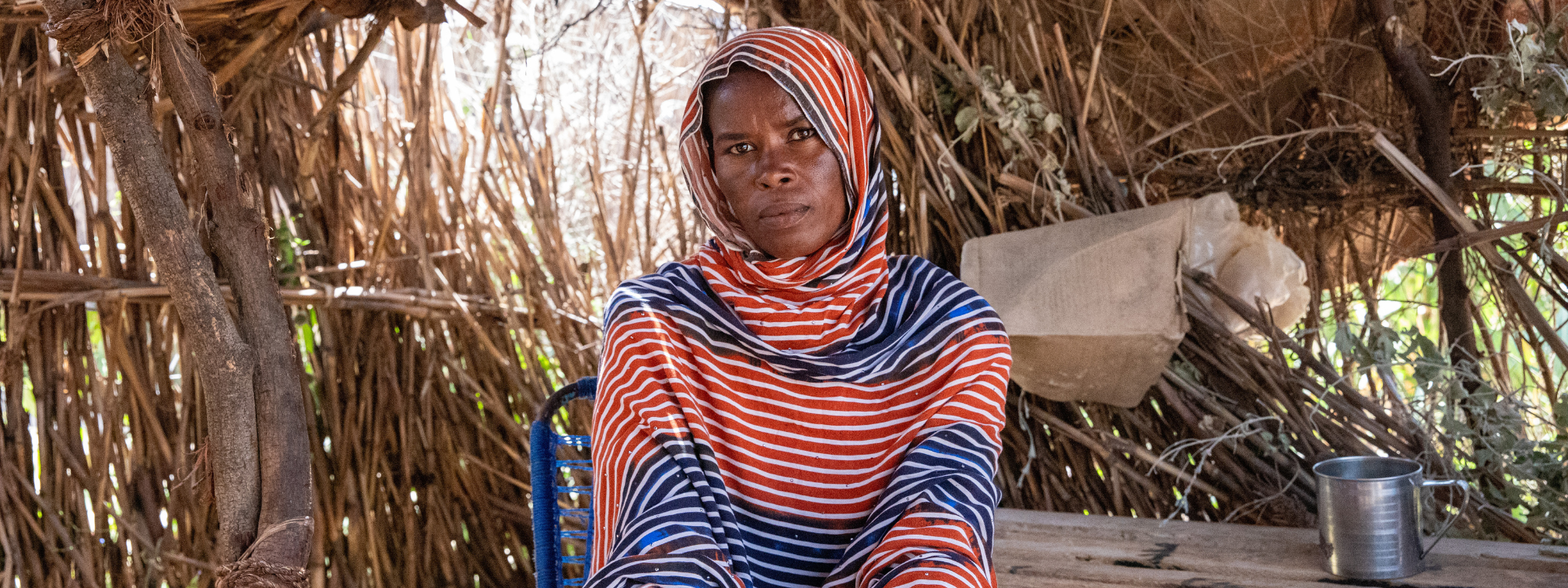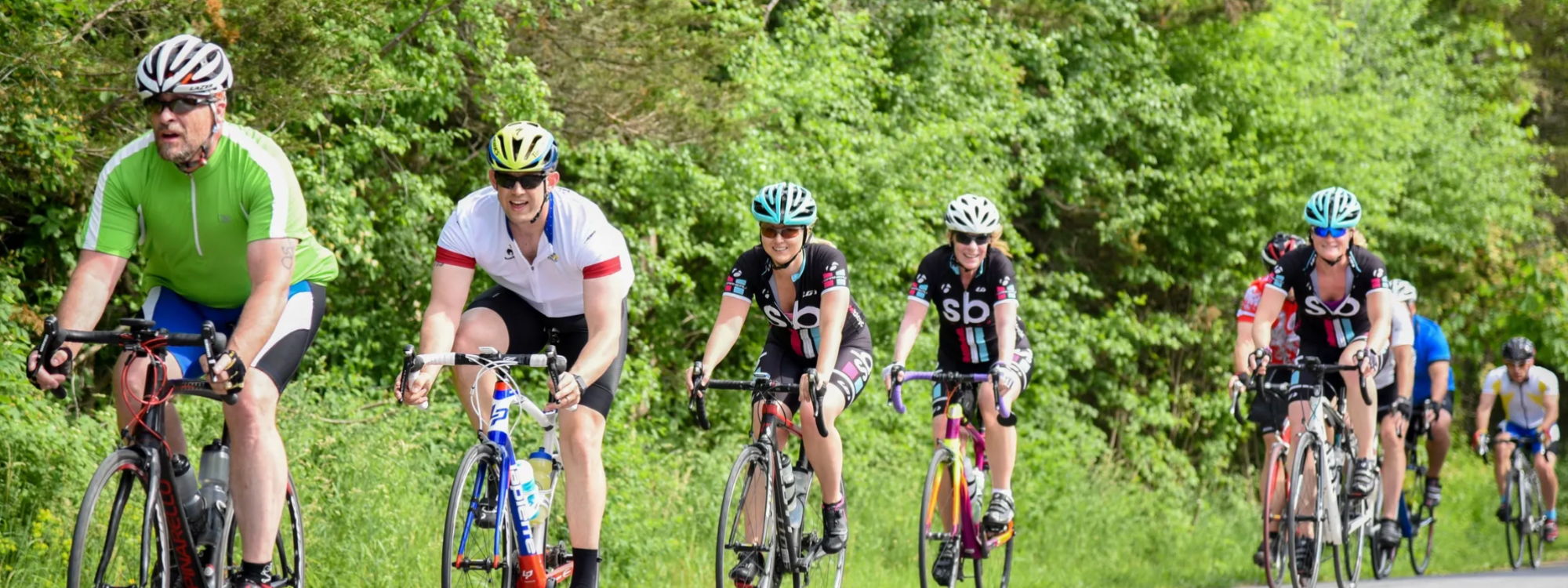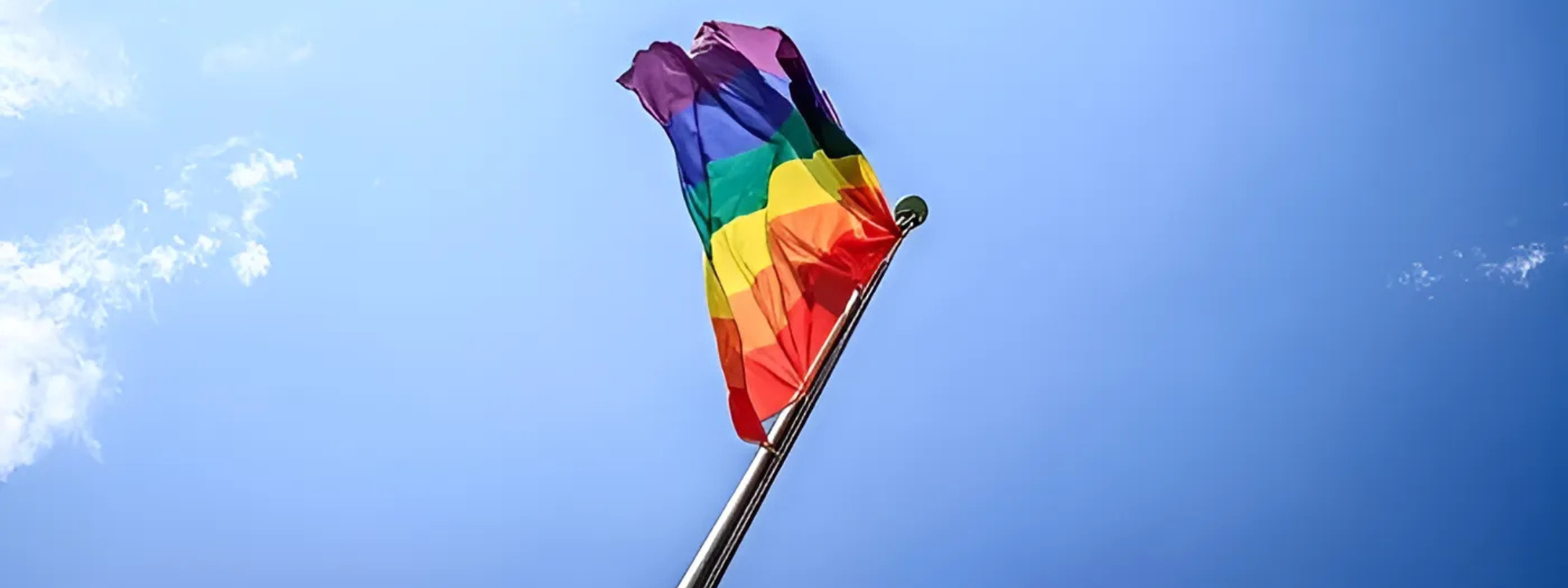
Blog
How Innovation Supports Sustainability
At ShelterBox, our mission is to provide emergency shelter to families who have lost their home to disaster, enabling them to rebuild their lives. Our aid items provide immediate solutions to families, not permanent ones. So people often ask us “what happens to the aid afterwards?” Over the years, we’ve seen the creative ways that people have used ShelterBox aid and how this innovation supports sustainability.
WHEN TEMPORARY HOUSING PROVIDES PERMANENT SOLUTIONS
Shelter kits and family tents provide immediate solutions for families who have lost their homes to disaster and conflict, but are not intended to be permanent housing solutions. So how can a one-time use item support sustainability?
Although the purpose of these tents is temporary housing, we have seen time and time again the longevity of these items. When a family moves out of a tent and into their new home, they can use the tent in any way they can imagine! We’ve seen families use their tents to improve their livelihoods, using it as a convenience store, running a sewing business out of it, a hair salon, and even a school. The most surprising use to me however, was at an apiary!
The photo below was taken in China and shows a ShelterBox tent in the middle of dozens of beehives. The sturdy, long lasting, weather resistant tent is the perfect place to store tools, protective gear, and even escape the heat for a break.
ShelterBox tents are not single use items. They are built to last, and we love learning of all the different ways that families use these tents to improve their lives years after disaster.

MULTI-PURPOSE TARPAULINS MAKE A DIFFERENCE
Another way that sustainability shines with aid items is through shelter kits. It has become much more common for operations teams to deliver shelter kits instead of tents after disaster. The kits are comprised of sturdy ShelterBox tarpaulin, fixings like ropes, and often contains locally sourced materials like wood and other building materials. These shelter kits are used to repair roofs and walls, as well has create new shelters.
Families are often thrilled at the quality of these tarps and want to make the most out of them! When their homes are repaired and they no longer need the tarp for their structures, we know that most families hold on to these tarpaulins. Many families have told us they are holding on to the tarps to be better prepared for next time. They know the quality is strong and built to last, and that they will come in handy during the next storm, flood, or other weather event. The high quality nature of these tents ensure that they are not single use items as families never want to give them away.
The tarpaulins also have many more uses other than just home repairs! In Bangladesh, Indonesia, and other countries, we have seen families using tarpaulins for harvest. The tarps help dry out crops and support people’s livelihoods. This might not be the intention of the tarp, but we have seen it used this way many times, and are thrilled that there are multiple uses for this aid item.
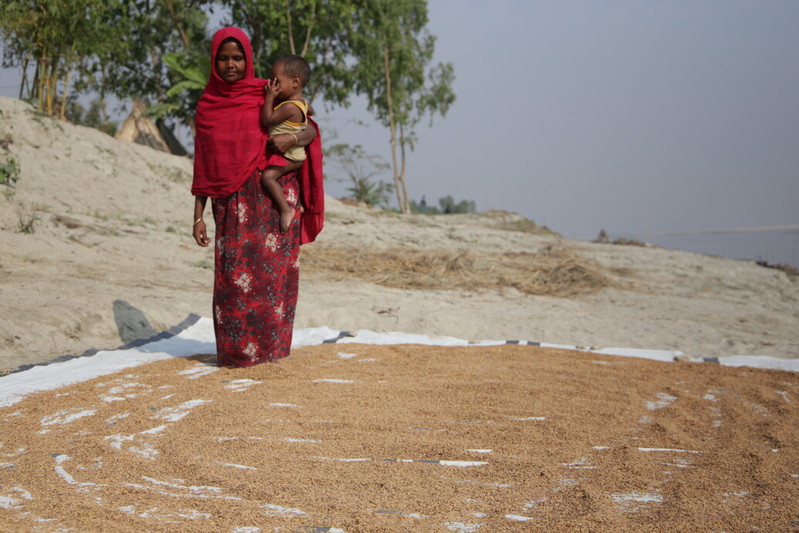
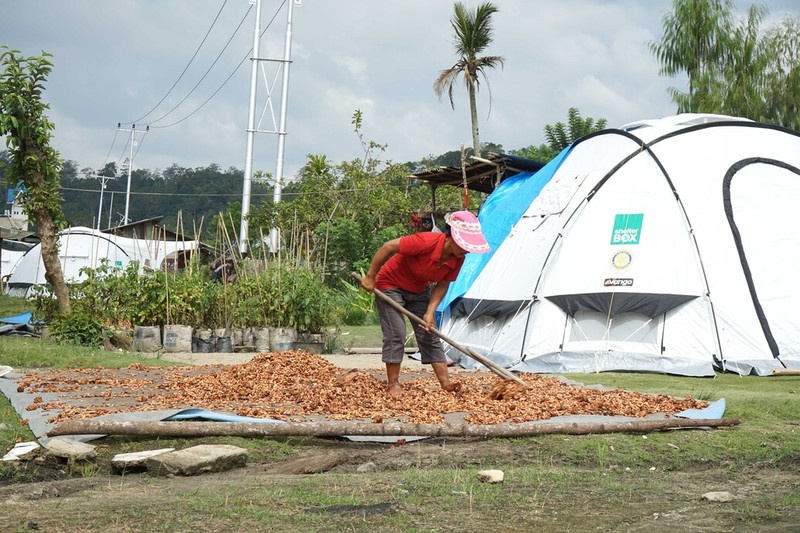
INNOVATIVE USES WE NEVER WOULD HAVE THOUGHT OF!
When operations teams deliver aid they also give families training on the best way to use the aid items. But what they do with each item is up to them, and the items are theirs to keep and use however they see fit.
Much of the ShelterBox aid we deliver is useful long after disaster has past. Mosquito nets continue to provide protection, solar lights are a great tool to have during brown outs, kitchen sets mean families can always have a home-cooked meal. But over the years, we have seen families use aid in ways we never expected.
One of the most joyful examples of innovation we’ve seen is water carriers becoming mini toboggans. During the Rohingya crisis, children in a refugee camp in Bangladesh got a bit of joy back when they started sledding down mud hills at the camp. Childhood shouldn’t be put on pause because of disaster and crisis.
One item with endless possibilities are the ShelterBoxes themselves. These sturdy boxes are strong and water proof, so many families have told us they use it to store their valuable possessions, or items like clothing that they don’t want to get wet in a storm.
The most creative use for the box that I’ve seen however, was turning it into a baby’s crib! Margaretha was pregnant when disaster struck her home, and just a few weeks later she gave birth. But she was able to use a blanket and a ShelterBox to create a snug sleeping spot for her new born baby.
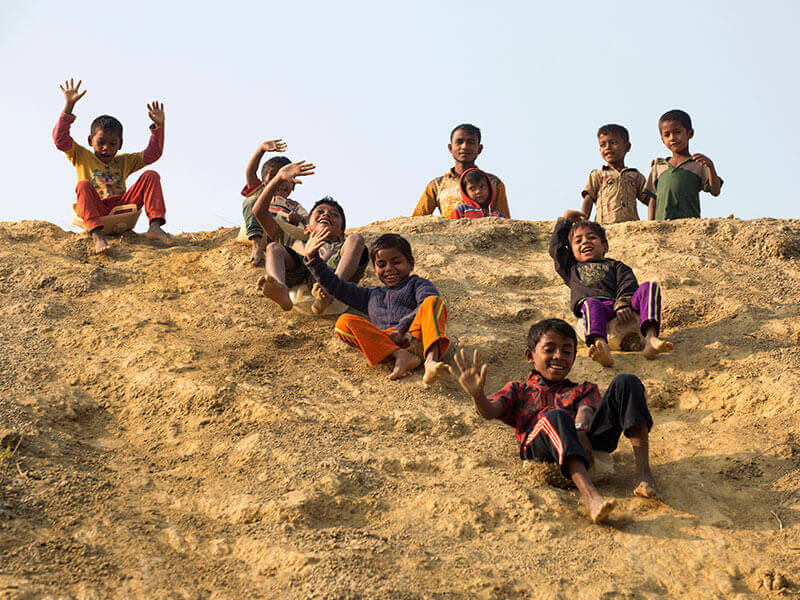
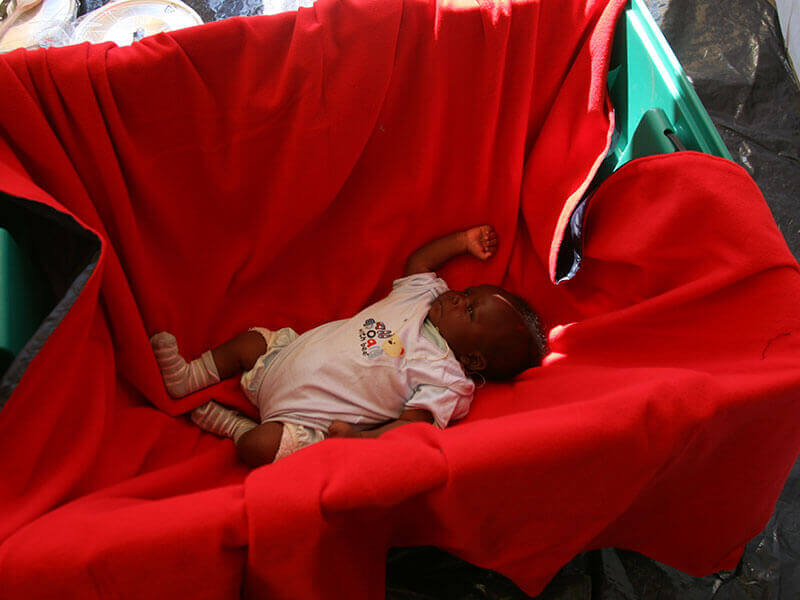
Sustainability is not often the first thing you think of when you think ‘disaster relief’. At ShelterBox, our goal is to help families in the immediate aftermath of disaster. We want to provide the best tools and items for families to not just survive, but recover. The items we deliver are strong quality and built to last. Which means families continue to find ways to innovate and reuse the items over and over again.
We might have one focus, ensuring no family is without shelter after disaster, but as you can see the aid we deliver has more than one use! And the list of innovative ways that families use this aid keeps on growing. We are grateful that families continue to use ShelterBox items long after disaster has passed. And we love that their innovation supports sustainability of our items.

